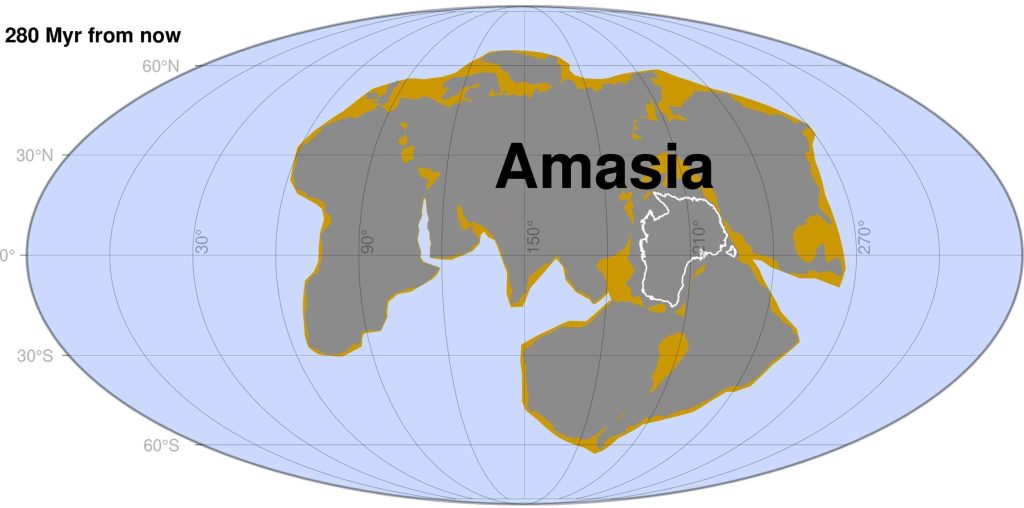New research has found that the world’s next supercontinent, Amasia, will likely form when the Pacific Ocean closes in 200 to 300 million years.
A research team led by Curtin University used a supercomputer to simulate how a supercontinent formed. They discovered that because the Earth has been cooling for billions of years, the thickness and strength of the plates beneath the oceans decrease over time, making it difficult for the next major continent to assemble by closing off “young” oceans, such as the Atlantic or the Indian oceans. The study was recently published in National Science Review.
According to lead author Dr Chuan Huang, of the Earth Dynamics Research Group at Curtin and the School of Earth and Planetary Sciences, the new findings are significant and provide insight into what will happen to Earth in the next 200 million years.
“Over the past 2 billion years, Earth’s continents have collided together to form a supercontinent every 600 million years, known as the supercontinent cycle. This means that the current continents are set to meet again within a few hundred million years,” said Dr. Huang.
“The resulting new supercontinent has already been named Amasya because some believe that the Pacific Ocean will close (as opposed to the Atlantic and Indian Oceans) when America collides with Asia. Australia is also expected to play a role in this important Earth event, first colliding with Asia and then linking America and Asia once the Pacific closed.
“By simulating how Earth’s tectonic plates evolved using a supercomputer, we were able to show that in less than 300 million years, the Pacific Ocean will likely close, allowing the formation of Amasia, debunking some previous scientific theories.”
The Pacific Ocean is what remains of the giant Panthalassa, which began forming 700 million years ago when the former supercontinent began to disintegrate. It’s the oldest ocean we have on Earth and has shrunk from its maximum size since the time of the dinosaurs. Currently, it is shrinking in size by a few centimeters per year. The Pacific Ocean, whose current dimensions are about 10 thousand kilometers, is expected to take two hundred and three hundred million years to close.
Controlling the entire world by a single continental mass would dramatically alter Earth’s ecosystem, according to co-author John Curtin Distinguished Professor Zheng-Xiang Li, also of the Curtin School of Earth and Planetary Sciences.
“The Earth as we know it will be very different when Amasia forms. Sea level is expected to be lower, and the vast interior of the supercontinent will be extremely arid with rising daily temperatures.
“The Earth is currently made up of seven continents with widely different human ecosystems and cultures, so it would be great to think about what the world might look like in 200 to 300 million years.”
Reference: “Will Earth’s Next Supercontinent Gather By Closing The Pacific Ocean?” By Chuan Huang, Zheng-Xiang Li, and Nan Zhang, Sep 28, 2022 Available here. National Science Review.
DOI: 10.1093/nsr/nwac205
The research was co-authored by researchers from the Curtin School of Earth and Planetary Sciences and Peking University in China.




/cdn.vox-cdn.com/uploads/chorus_asset/file/25550621/voultar_snes2.jpg)



More Stories
Watch a Massive X-Class Solar Explosion From a Sunspot Facing Earth (Video)
New Study Challenges Mantle Oxidation Theory
The theory says that complex life on Earth may be much older than previously thought.